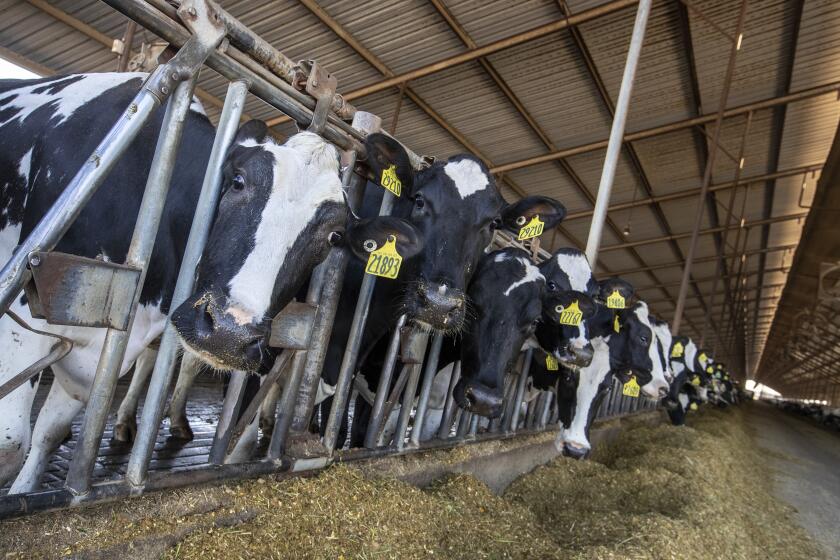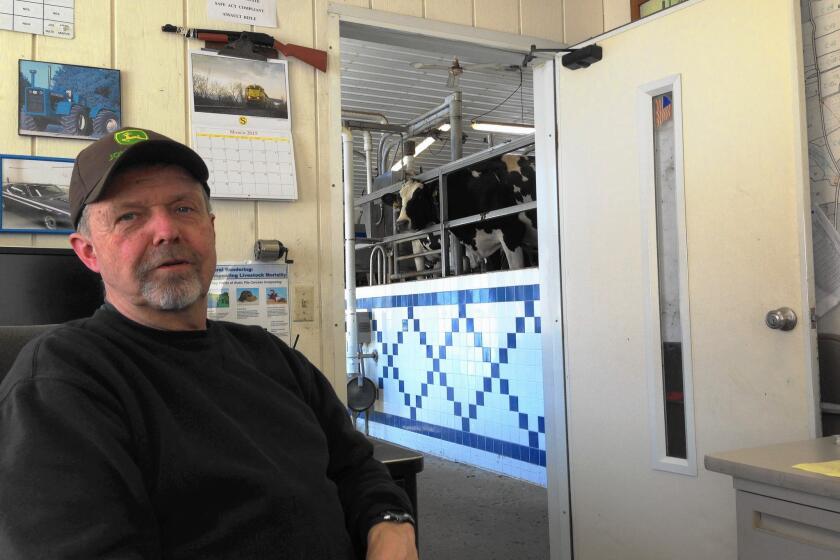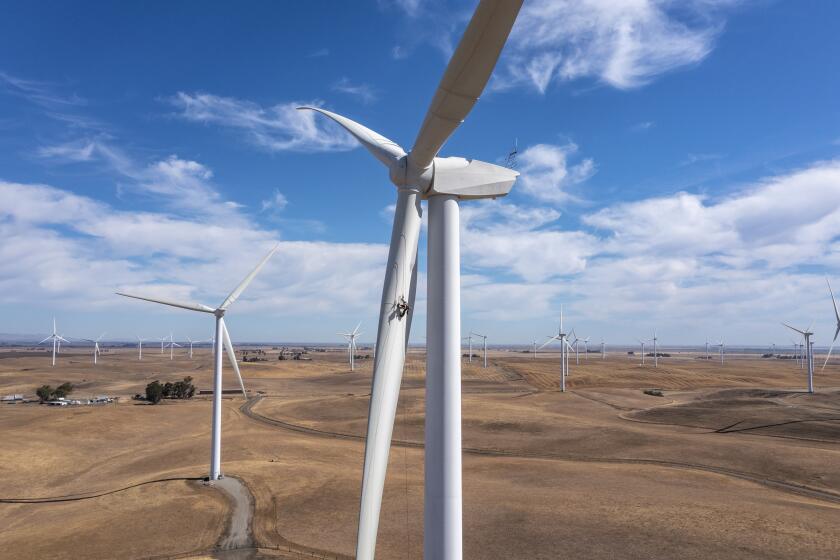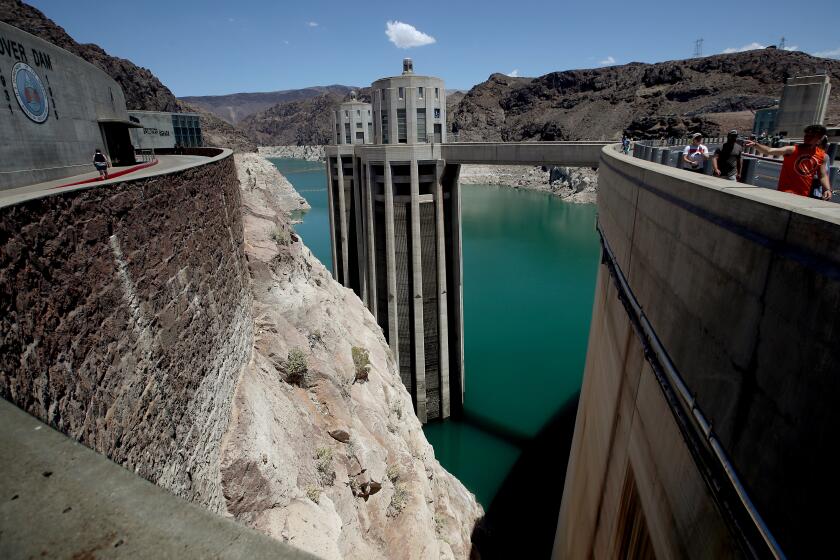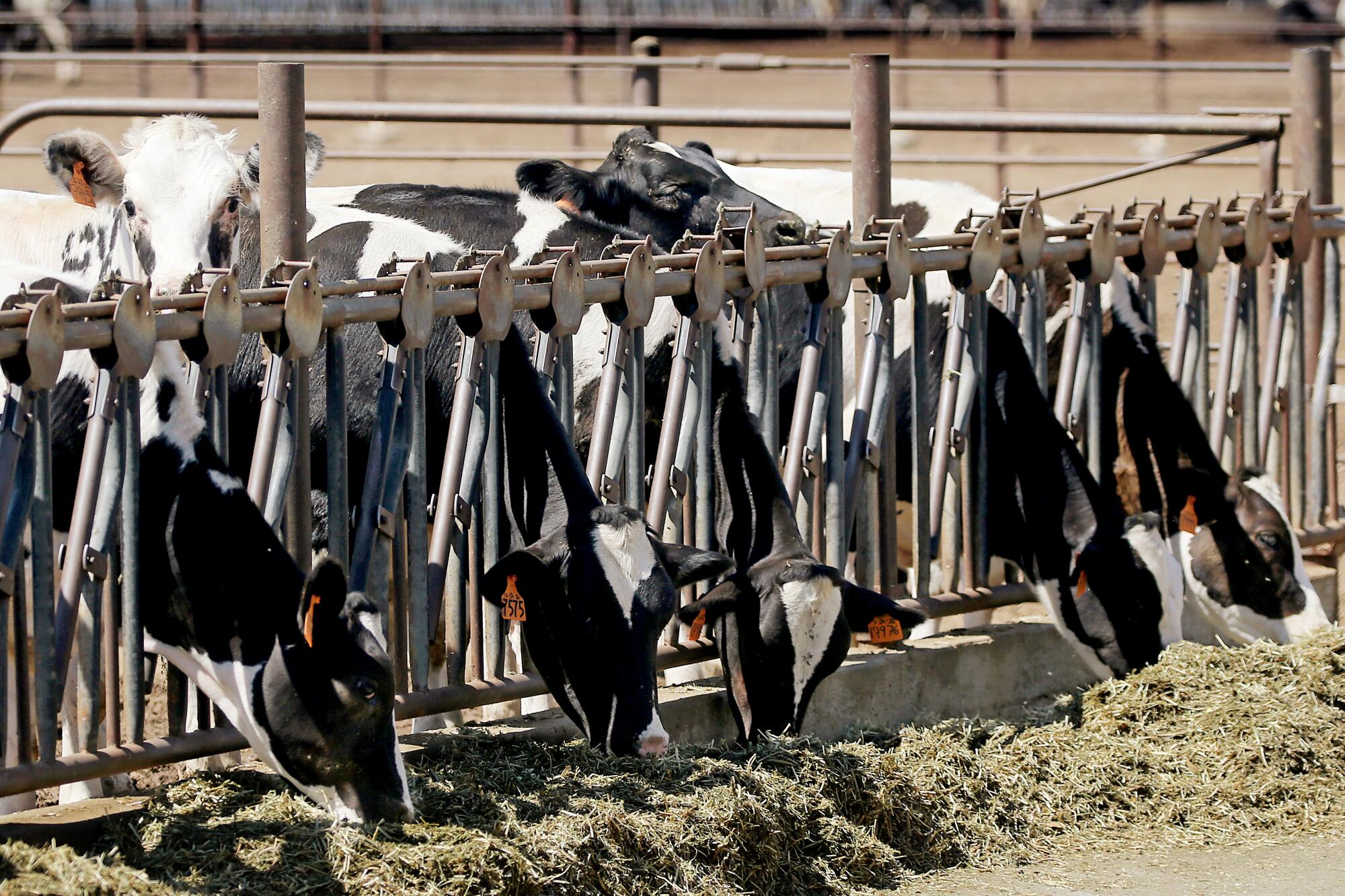
- Share via
Michael Oosten’s grandparents were dairy farmers in the Netherlands and immigrated to California in the 1920s, starting their own dairy farm in Paramount in 1945 before relocating to bigger farms in Artesia and Bellflower.
In the early 1970s, they moved their farm to Chino, but decided to sell it in 2001 to a trucking company next to an Amazon warehouse, which was built on land comprised of two other dairy farms.
Oosten, who for 18 years has owned Marvo Holsteins — a dairy farm in the unincorporated Riverside County area of Lakeview that supplies milk to Land O’Lakes — said dairy farming has declined in California since the industry’s peak in 2008. The industry has been hurt by shrinking real estate in Southern California, more affordable land in other states, rigorous permitting processes and the shortage of water and other natural resources.
“Economics is the biggest driver of farmers leaving to go out of state,” Oosten said. “Milk pricing tends to be very competitive in other states; the feed prices are lower and the regulatory environment is better.”
Real estate, in particular, has played a significant role in more dairies choosing to leave California, he said.
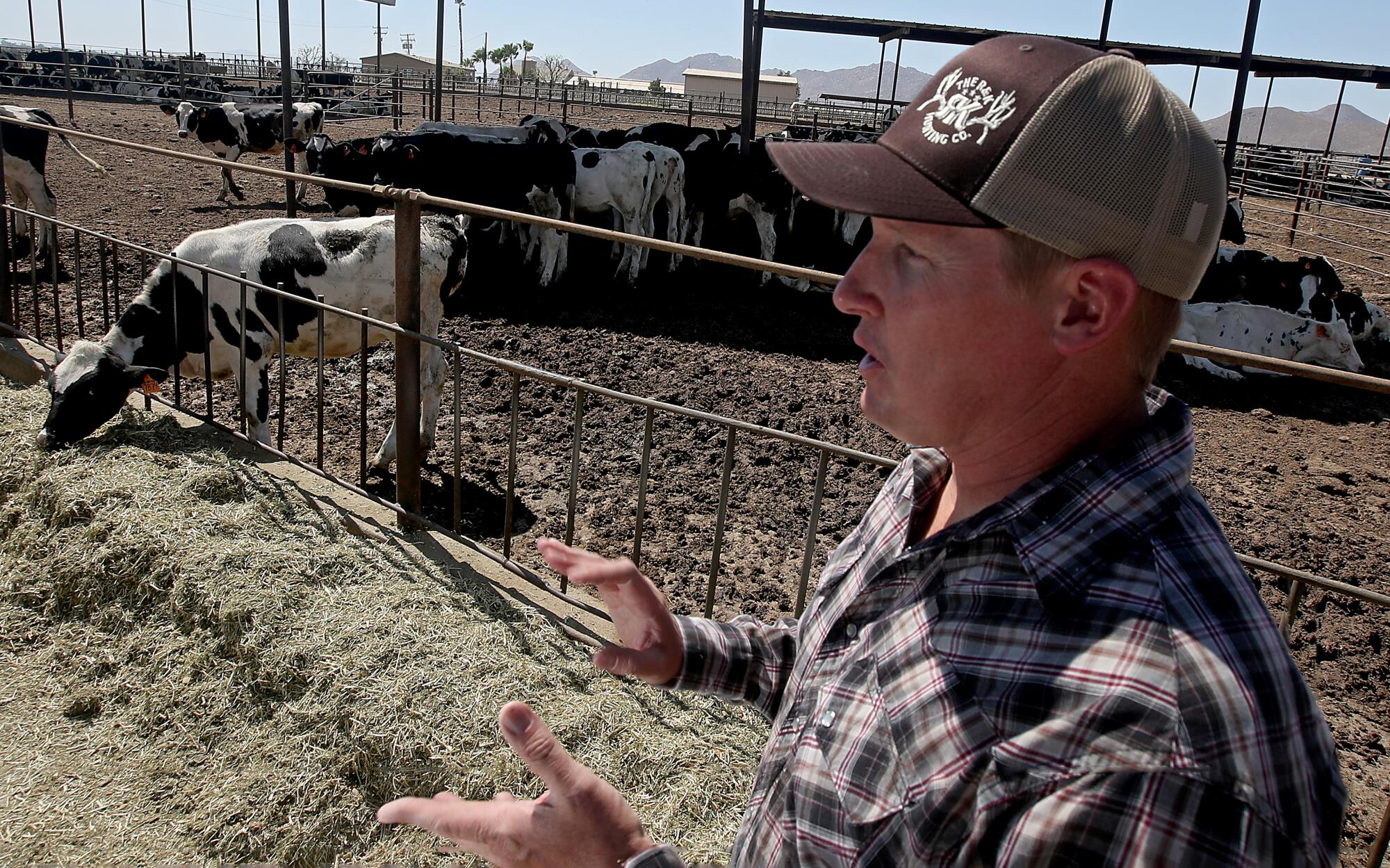
“As urban expansion came in and got close to the farm, developers would come in and buy the land and convert it into housing or commercial buildings,” he said. “That’s the progression of what’s happened in the California dairy industry. More recently in the last 20 years, a lot of people have started to move out of state.”
Marvo Holsteins is one of about 1,200 dairies left in California, a significant drop from the roughly 2,100 farms in 2001 and 20,000 farms in 1950, according to Michael Boccadoro, executive director of sustainability nonprofit Dairy Cares.
Although the number of dairies in the state has declined by 94% in the last 70 years, farmers have been able to make up for the difference through increased milk production and improved cow comfort and breeding, Boccadoro said.
California has touched off a biofuel boom in pursuit of climate action. But environmental activists and analysts fear an unwelcome chain reaction in agriculture.
“The idea that we’re building new dairies or increasing production in California is a nonstarter,” he said. “We haven’t built a new dairy in six to seven years. It’s just not a good place if you’re getting into the milk production business.”
The state went from housing about 1.88 million dairy cows in 2008 to about 1.72 million today — a decrease of about 160,000 cows in 14 years, Boccadoro said. The number of cows in the state has reduced by about half a percent to 1% every year.
Instead of staying in California, dairy cows are being shipped to Texas, South Dakota, Arizona, New Mexico, Idaho and Kansas — states not typically known for their dairy production. Boccadoro said a shrinking demand for fluid milk and increased demand for cheese, yogurt, butter, whey protein and other milk-related products have pushed milk production to the Midwestern states. Demand for dairy has increased by 200% since the pandemic began in 2020.
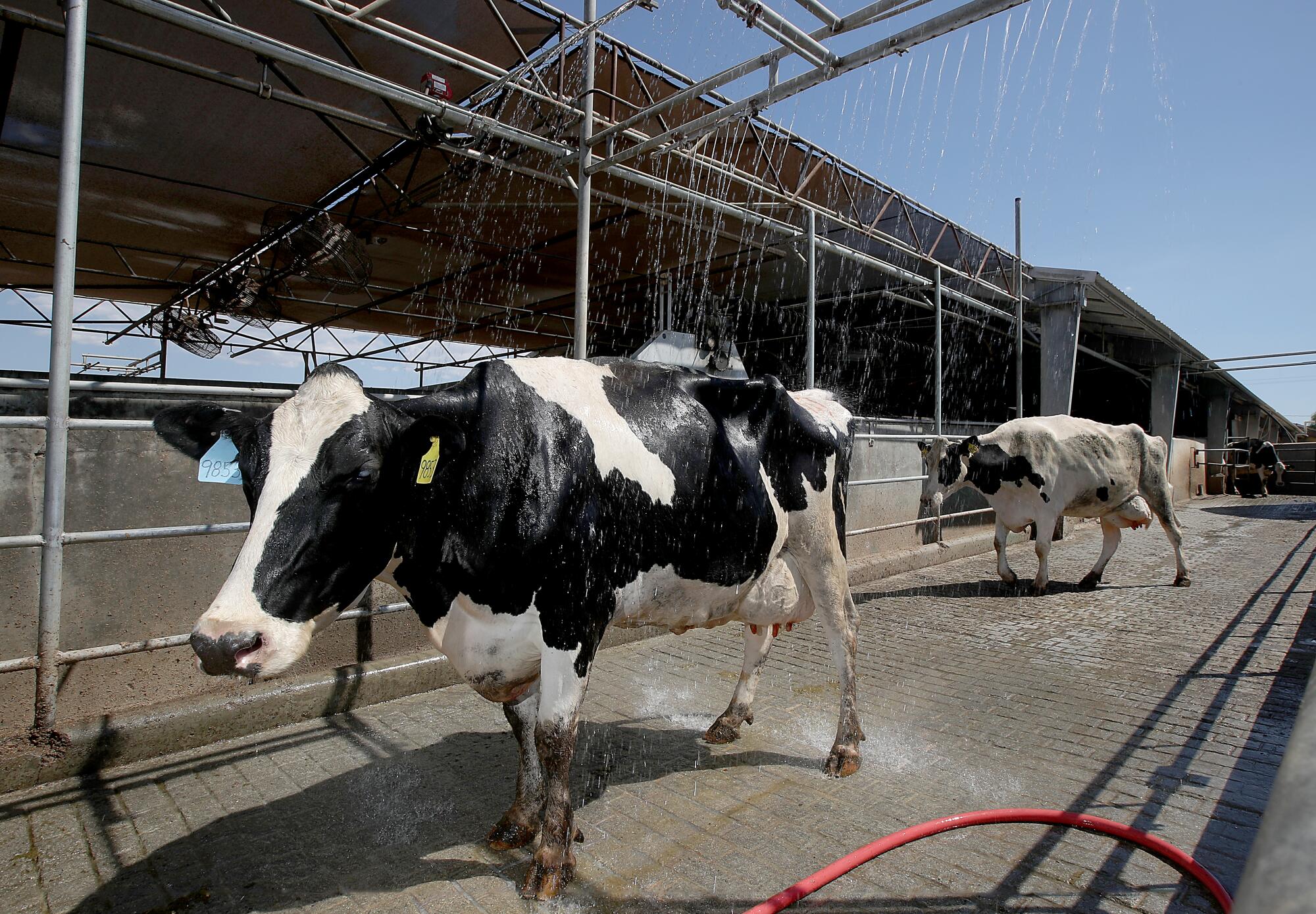
“Historically, cows needed to be close to the market because it was a fresh milk market and milk has a short shelf life of about two weeks, so there was a lot of milk production on the West Coast and East Coast,” he said. “With the new products in demand, the dairy sector is seeing milk production move to the middle parts of the country because of the longer shelf life of the products.”
Closer proximity to new manufacturing sites also has driven cows out of California. Hilmar Cheese Co. opened a facility in Texas, with another cheese and whey manufacturing plant in the works in Kansas. Last fall, Leprino Foods, another major dairy manufacturing company, announced it was building a new facility in Lubbock, Texas.
Another big question plaguing dairy farmers is whether they’ll see climate change regulations in the next few years and what effects they could have.
In 2016, California lawmakers passed the state’s Short-Lived Climate Pollutant Reduction law, known as SB 1383, setting a 2030 goal to reduce methane emissions from the dairy and livestock industries by 40% below 2013 levels, which amounts to about 9 million metric tons of carbon dioxide. If the California Air Resources Board determines in 2024 that the dairy industry isn’t on track for hitting its target, it can start implementing regulations to limit emissions.
When Mike McMahon’s Latino employees need to go to the bank, the pharmacy or the grocery store, he makes sure someone drives them to town, waits while they run errands, and then brings them safely back to his dairy farm.
Oosten said potential regulations could entail requiring dairies to install anaerobic digesters — devices that control the decomposition of manure and convert methane into clean energy — as well as using feed additives to help reduce methane produced by cows through belching.
“There’s that fear in California in that if we start making mandates and regulations, then we start losing our incentive funding, we start losing our options and we start losing farms,” he said. “Some of them might go out of business, which would be a travesty for that family. ... The other thing that’s going to happen is they’re going to pick up, leave and go out of state. The methane still gets produced; they don’t have to deal with [mandates] over there and that’s the ‘leakage’ that we talked about.”
Anja Raudabaugh, chief executive of Western United Dairies, a trade organization that represents the majority of milk produced in California, agreed that the state is better off from a global climate perspective if more dairy farmers stay in California.
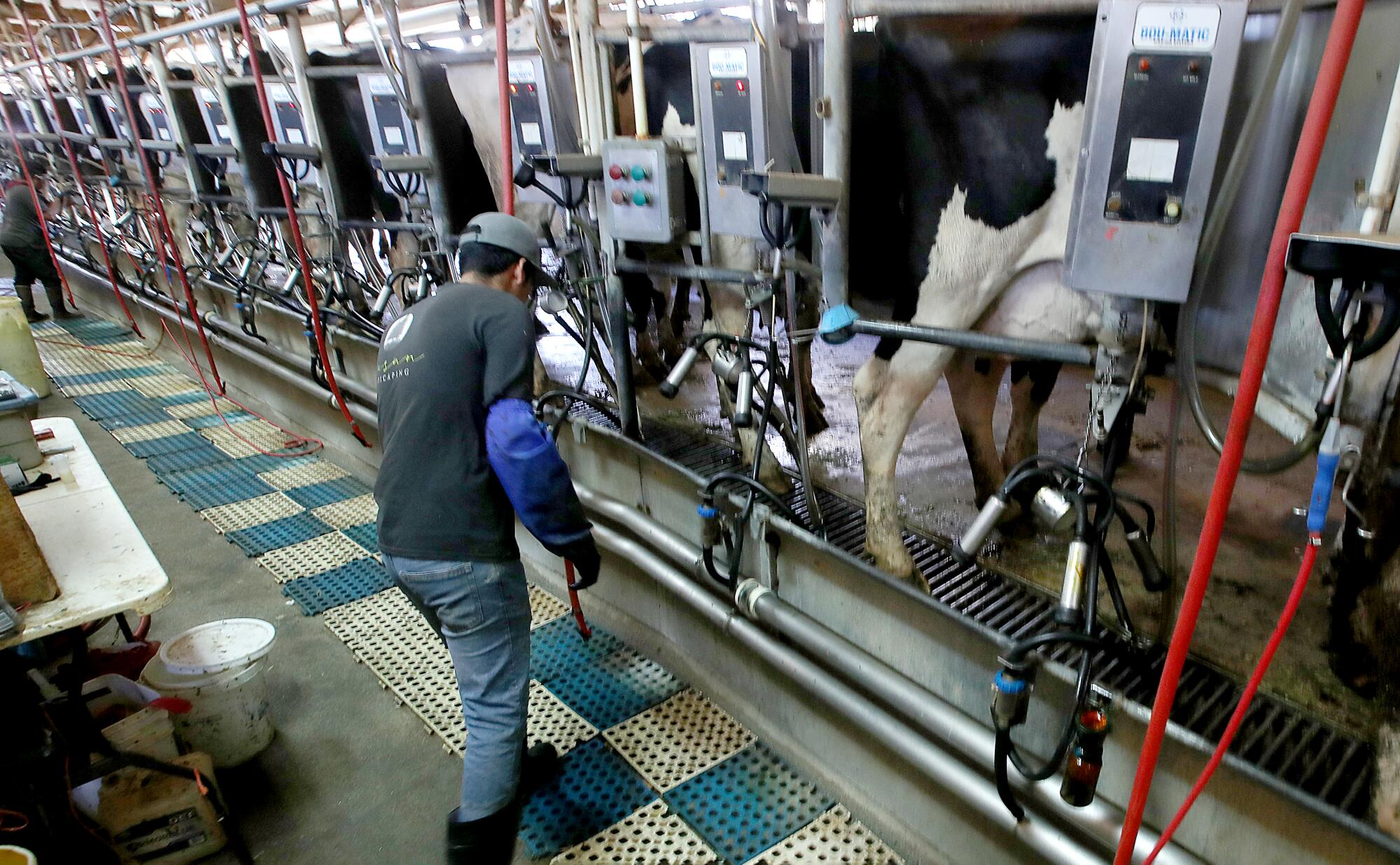
“California’s exporting methane to different locations, which means processing and manufacturing is also leaving, which was the state’s revenue source for providing green products,” she said. “It was designed to be a reward system, but if we don’t make them here in California, they’re definitely going to make them somewhere else.”
Dairy industry concerns about the air rules were reported in August by the Inland Valley Daily Bulletin.
For the record:
11:01 a.m. Sept. 16, 2022An earlier version of this article misspelled California Air Resources Board spokesperson David Clegern’s name as Clergen.
But David Clegern, a spokesperson for the California Air Resources Board, said environmental regulations have little to do with the cow exodus from California because it isn’t even allowed to submit one for approval until 2024.
“Cattle prices are very high right now, and jumped quite a bit this summer, so there may be more of a market drive there,” Clegernsaid.
Staff members are in the initial stages of developing a regulation on methane emissions by speaking with community members and working groups, according to Clegern.
“We won’t start until we have an actual regulation,” he said. “It takes a couple years to get through the public processes and the legislative and other regulatory tests. We have to make sure it’s not interfering with federal regulations and it scientifically makes sense and it can be done in a reasonable and not-too-expensive way.”
Local opposition to solar and wind farms could be a huge barrier to clean energy.
Bill Magavern, policy director for the Coalition for Clean Air, emphasized the importance of reducing methane, a short-lived climate pollutant that lasts in the atmosphere for about 12 years and has 80 times the warming effect of carbon dioxide.
“In addition to the climate change impact, there are also major local pollution impacts from these huge factory farm operations, including the methane itself that contributes to smog, which is already well above legal levels in the San Joaquin Valley,” he said. “The South Coast Air Basin and the San Joaquin Valley Air District are the two places in the country with the worst air pollution, and that’s where California’s dairy industry is.”
Magavern expressed skepticism that potential regulations are driving cows out of the state.
“I have been watching them lobby over the last 20 years and oppose every measure that would get them to reduce the pollution they’re emitting in California,” he said of diary farms. “They’re resisting everything, and now they’re complaining when they’re not even being regulated is telltale.”
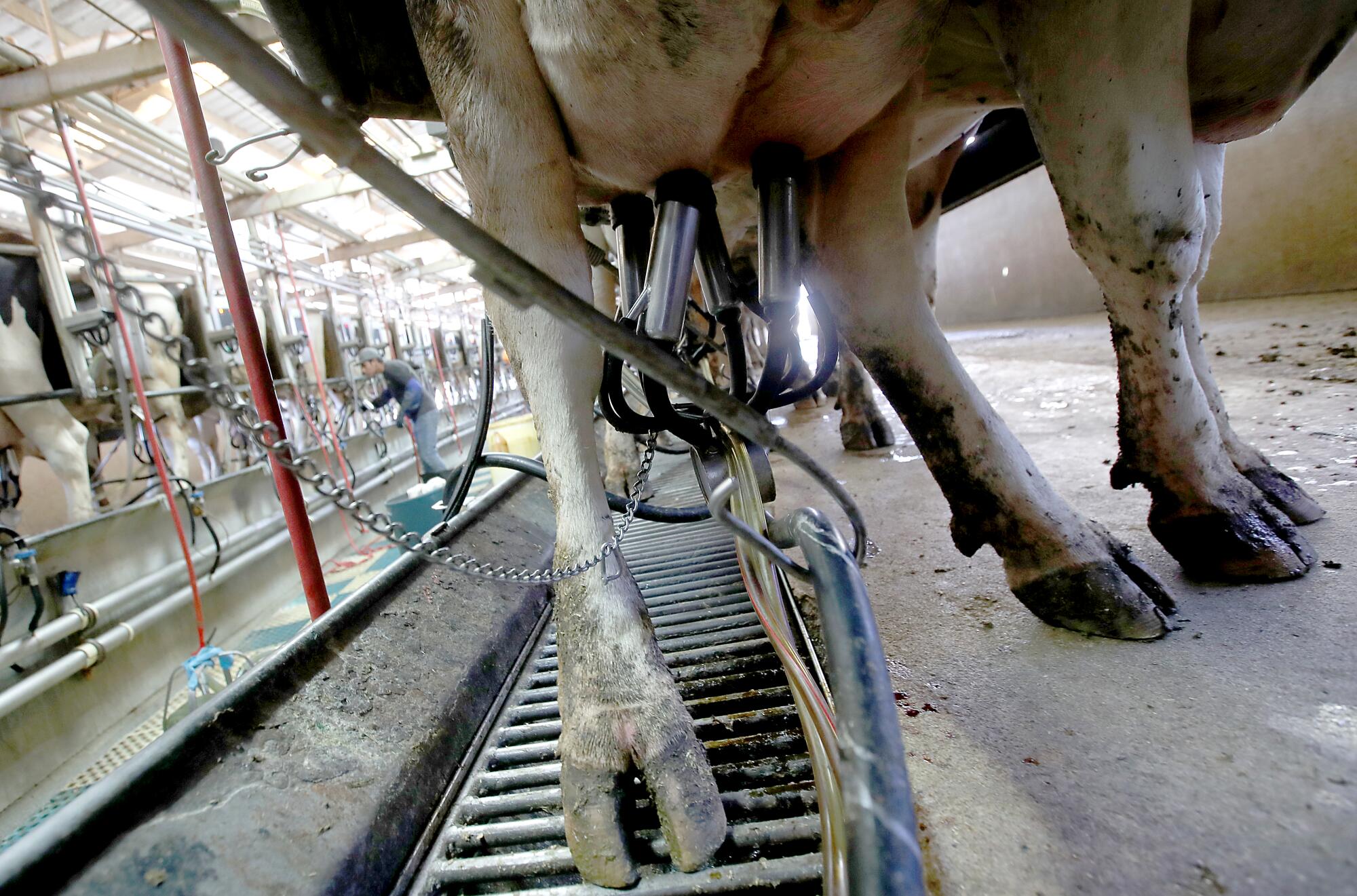
According to a report by the California Air Resources Board released this spring, the dairy and livestock sector — which accounts for more than half of the state’s methane emissions — has reduced its annual emissions by just over half. Dairy farmers will have to continue modifying manure management systems, decreasing livestock populations and using digesters in order to meet the 2030 goal.
But not everyone is thrilled with the dairy digesters. Genevieve Amsalem, research and policy director of the Central California Environmental Justice Network, said dairy farms contribute to half of the particulate matter pollution in the San Joaquin Valley. The digesters, she said, are creating ammonia, which in turn causes air pollution and endangers public health.
“By installing a dairy digester, you’re using state money to institutionalize this practice and setting it in stone,” she said. “That’s a big concern that the state is institutionalizing these environmental catastrophes.”
Two months ago, federal officials told states that depend on the Colorado River to make plans for major cuts. Negotiations have yet to produce a deal.
Citing the high cost of digesters — it takes about $6 million to install one at a 2,000-cow farm — and the fact that his farms don’t use as much water because they house their cows outside, Oosten said he’s in talks with digester companies and isn’t opposed to the idea of implementing them. As one of the incentives for reducing methane emissions, the state’s Dairy Digester Research & Development Program covers a portion of the costs of a digester while dairy farmers pay for the rest.
Oosten said that his farms sell about 30% to 35% of their milking herd, comprised of about 2,500 cows, every year for beef and that his livestock size has been relatively stable despite the consolidation of his family’s farms over the years.
“We’re not throwing animals out of the state just to get rid of them,” he said. “It’s based on economics and wherever dairies are the most profitable.”
More to Read
Sign up for Essential California
The most important California stories and recommendations in your inbox every morning.
You may occasionally receive promotional content from the Los Angeles Times.
